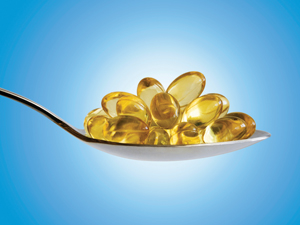
In the last decade, studies have been published suggesting strongly that fish-liver oil, particularly the omega-3 variety, could decrease the risk of dying from a heart attack by as much as 61 percent.
by Dr. Murray R. Susser —
A paradigm shift is a fundamental change in an underlying assumption, model or style. For example, in the 1960s the medical model used for managing most bowel diseases in the U.S. was a low-residue diet (LRD).
During the ’60s, Dr. Denis Burkitt, a respected British physician and researcher, had been working in Kenya and Uganda for many years and noted that the African diet was high in fiber and low in refined carbohydrates. In other words, this population ate a high-residue diet (HRD). He observed and reported that many bowel diseases common in the U.S. are rare or nonexistent among the African natives. These diseases included constipation, diverticulitis, gallstones, appendicitis, hemorrhoids, polyps, colon cancer, deep vein thrombosis, heart attacks and high blood pressure, as well as obesity and diabetes.
Burkitt delivered his findings at many medical schools in the U.S. around 1966, and soon after, there was a paradigm shift wherein most doctors began prescribing HRD for many of those medical conditions. There is still an ongoing controversy about how much good this has done for Americans, but we cannot deny that there has been a shift.
What about other shifts that affect the health of Americans? A recent shift that may be in the works seems to concern omega oils. In the last decade, studies have been published suggesting strongly that fish-liver oil, particularly the omega-3 variety, could decrease the risk of dying from a heart attack by as much as 61 percent. That is a huge percentage, but is it real?
Professor Brian Peskin says that it may be fairly real, but it is not precise and that there is really a need for what he calls parent essential oils (PEOs). He also says that the greater need is for omega-6, not omega-3, and that his 10 years of research prove that the present use of fish-liver oil, high in omega-3, does at least as much harm as good to our health.
If Peskin is right, there are only two PEOs. One is linoleic acid and the other is alpha linoleic acid, which become omega-6 and omega-3, respectively.
These two oils are critical to our health in many ways, perhaps the most important is increased flexibility of arteries. Peskin advocates the use of photoplethsymography (PTG), an elegant device that measures the pulse wave precisely and reproducibly, and is used to show the physiologic improvement resulting from the use of PEOs made from a combination of five oils: safflower, sunflower, pumpkin, evening primrose and coconut.
If Peskin turns out to be correct in his findings, and that is still not certain, he may be leading the way into a new paradigm shift for essential oils. This new paradigm will have a major impact on our health and longevity.
Murray R. Susser, M.D., M.D.(H), specializes in persistent chronic diseases including CFS and FMS, bio-identical hormones and healthy diet. He has been a pioneer in IV therapies and detoxification, and is the author of Solving the Puzzle of Chronic Fatigue Syndrome. 480-240-2600.
Reprinted from AzNetNews, Volume 30, Number 2, April/May 2011.





February 24, 2012
Health, Vitamins, Minerals and Supplements